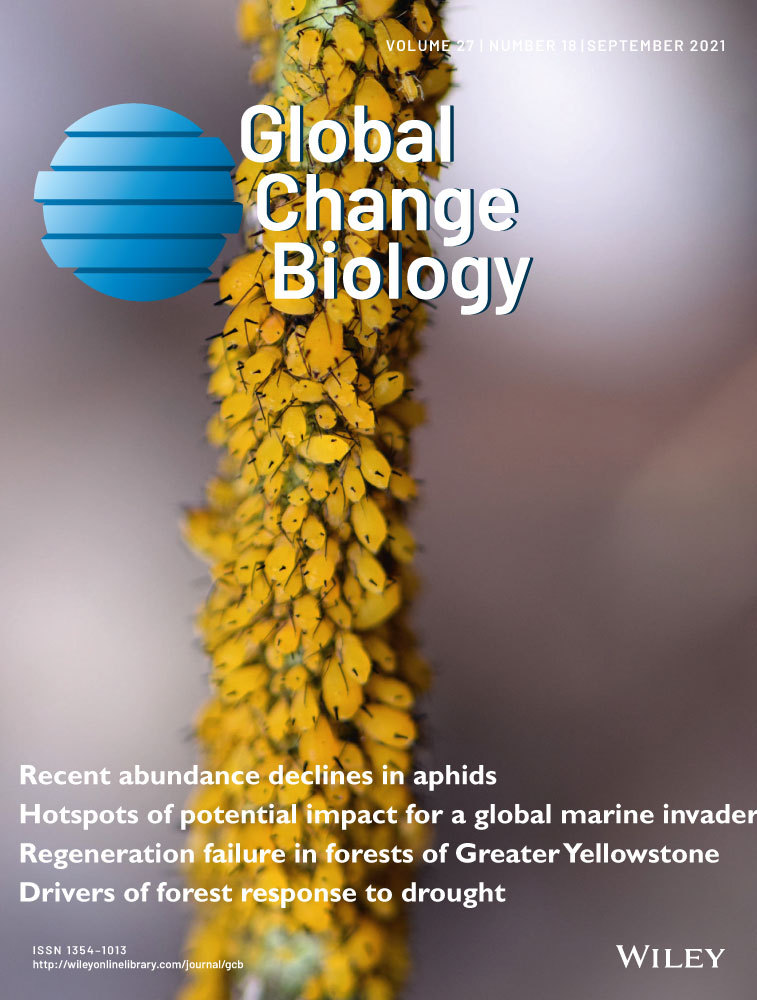Ver ítem
- xmlui.general.dspace_homeCentros e Institutos de InvestigaciónCIRN. Centro de Investigaciones de Recursos NaturalesInstituto de Clima y AguaArtículos científicosxmlui.ArtifactBrowser.ItemViewer.trail
- Inicio
- Centros e Institutos de Investigación
- CIRN. Centro de Investigaciones de Recursos Naturales
- Instituto de Clima y Agua
- Artículos científicos
- Ver ítem
Discrimating the biophysical signal from human - induced effects on long - tern primary production dynamics. The case of Patagonia.
Resumen
The temporal trend of aboveground net primary production (ANPP) is frequently used to estimate the human effect on ecosystems. In water-limited ecosystems, like most grazing areas in the world, human effects act upon ANPP in combination with environmental variations. Our main objective was to quantify long-term (1981-2012) changes of ANPP and discriminate the causes of
these changes between environmental and human at a subcontinental scale, across vast
[ver mas...]
The temporal trend of aboveground net primary production (ANPP) is frequently used to estimate the human effect on ecosystems. In water-limited ecosystems, like most grazing areas in the world, human effects act upon ANPP in combination with environmental variations. Our main objective was to quantify long-term (1981-2012) changes of ANPP and discriminate the causes of
these changes between environmental and human at a subcontinental scale, across vast areas of Patagonia. We estimated ANPP through a radiative model based on remote sensing data. Then, we evaluated the relation between ANPP and environmental interannual variations of two hierarchically related factors: ENSO, through the Southern Oscillation Index, SOI, and precipitation. We described the human effect through the shape of the temporal trends of the residuals of the environmental model (RESTREND) and quantified human relative impact through the RESTREND: ANPP trend ratio. ANPP interannual variation was significantly explained by
ENSO (through SOI) and precipitation in 65% of the study area. The Southern Oscillation Index had a positive association with annual precipitation. The association between ANPP and annual precipitation was positive. RESTREND analysis was statistically significant in 92% of the area where the tested environmental model worked, representing 60% of the study area, and it was mostly negative. However, its magnitude, revealed through the RESTREND: ANPP trend ratio, was relatively mild. Our analysis revealed that most of ANPP trends were associated with climate and that even when human density is low, its incidence seems to be mainly negative.
[Cerrar]

Autor
Irisarri, Jorge Gonzalo Nicolás;
Texeira, Marcos;
Oesterheld, Martín;
Veron, Santiago Ramón;
Della Nave, Facundo;
Paruelo, José María;
Fuente
Global Change Biology 27 (18) : 1-34 (September 2021)
Fecha
2021-09-01
Editorial
Wiley
ISSN
1365-2486
Formato
pdf
Tipo de documento
artículo
Palabras Claves
Derechos de acceso
Embargado
 Excepto donde se diga explicitamente, este item se publica bajo la siguiente descripción: Creative Commons Attribution-NonCommercial-ShareAlike 2.5 Unported (CC BY-NC-SA 2.5)
Excepto donde se diga explicitamente, este item se publica bajo la siguiente descripción: Creative Commons Attribution-NonCommercial-ShareAlike 2.5 Unported (CC BY-NC-SA 2.5)


